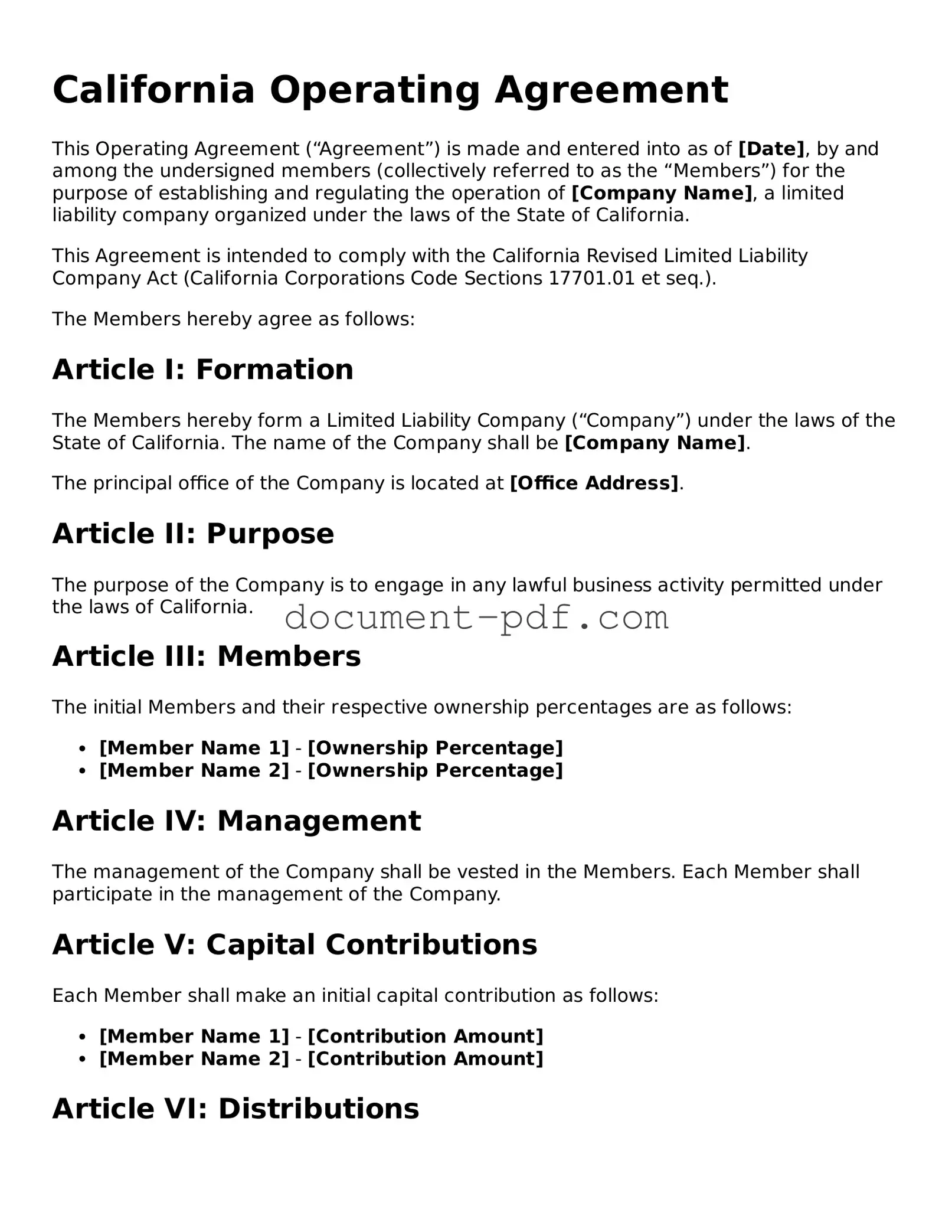California Operating Agreement
This Operating Agreement (“Agreement”) is made and entered into as of [Date], by and among the undersigned members (collectively referred to as the “Members”) for the purpose of establishing and regulating the operation of [Company Name], a limited liability company organized under the laws of the State of California.
This Agreement is intended to comply with the California Revised Limited Liability Company Act (California Corporations Code Sections 17701.01 et seq.).
The Members hereby agree as follows:
Article I: Formation
The Members hereby form a Limited Liability Company (“Company”) under the laws of the State of California. The name of the Company shall be [Company Name].
The principal office of the Company is located at [Office Address].
Article II: Purpose
The purpose of the Company is to engage in any lawful business activity permitted under the laws of California.
Article III: Members
The initial Members and their respective ownership percentages are as follows:
- [Member Name 1] - [Ownership Percentage]
- [Member Name 2] - [Ownership Percentage]
Article IV: Management
The management of the Company shall be vested in the Members. Each Member shall participate in the management of the Company.
Article V: Capital Contributions
Each Member shall make an initial capital contribution as follows:
- [Member Name 1] - [Contribution Amount]
- [Member Name 2] - [Contribution Amount]
Article VI: Distributions
Distributions of the Company’s profits and losses shall be made to the Members in proportion to their respective ownership percentages, unless otherwise agreed upon.
Article VII: Amendments
This Agreement may be amended only by a written agreement signed by all Members.
Article VIII: Indemnification
The Company shall indemnify its Members to the fullest extent allowed by law, against any and all expenses, losses, or liabilities incurred by them in connection with the Company.
Article IX: Miscellaneous
- This Agreement constitutes the entire agreement among the Members.
- If any provision of this Agreement is found to be invalid, the remaining provisions shall continue in full force and effect.
IN WITNESS WHEREOF, the Members have executed this Operating Agreement as of the date first above written.
______________________ [Member Name 1]
______________________ [Member Name 2]
